How to grow onions from sevka. Growing onions in the country
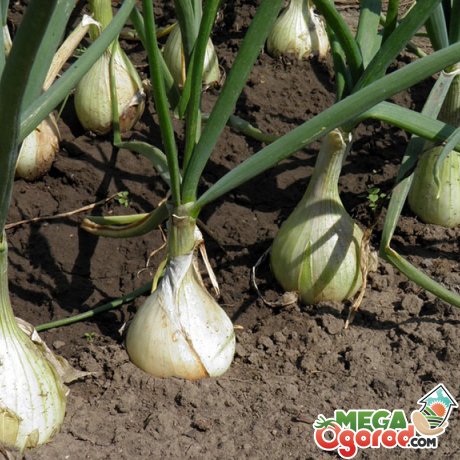
Care Tips:
- The main problem with such planting onions - an insufficient amount of moisture. To keep it in the soil. It is possible to lay a layer of mulch not less than 5 cm high on the garden bed. It will save the soil from drying out and delay the development of annual weeds. But this method is too laborious for large beds. More often, the soil has to be watered to maintain moisture. When the tops begin to turn yellow, watering stops. Bulbs that grow in dry soil are better stored, but smaller and taste more bitter.
- In order for onions to grow large and tasty, you need to periodically fertilize it. After the first feathers appear on the garden, ammonium nitrate is added, dissolving a tablespoonful of the substance in a bucket of water. After the bulbs have 4 feathers, repeat feeding with nitrophoska. In a bucket of water diluted 50 g.
- After applying the fertilizer watered with clean water and loosen the soil between the rows. Loosen as often as possible. This contributes to the fact that the soil becomes more friable, and the onions grow large and of high quality.
- To the bulbs in the winter is not rot and well kept, they need to be protected from fungal diseases. Most often it is. For the prevention and control of it is used bordeaux liquid or other preparations containing copper. After processing, the pen can not be eaten.
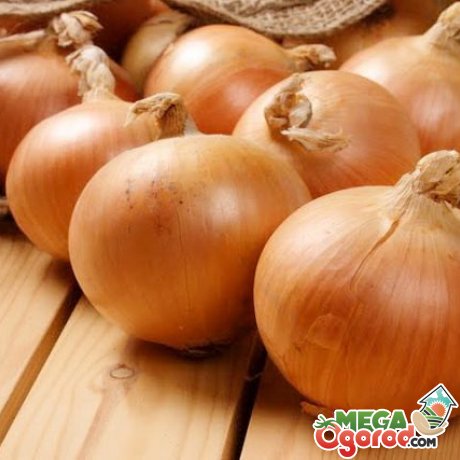
Onions it is important to remove from the garden in time. Determine the degree of readiness can be in color and condition of the tops. In mature onions, it is yellow, dried. This usually occurs in early August.
If you want the onions to ripen faster, slightly pull each bulb out of the ground.
For a successful operation, it is enough to take a bulb closer to the ground and pull a little, until the first crunch of dangling roots. Leave the bulbs to ripen for several days (up to a week). But the weather these days should be dry. If the rain is approaching, it is better to harvest the crop unripe and place it under a canopy.
If the crop still got under the rain, it must then be dried in the fresh air to prevent the bulbs from rotting. After the bulbs are completely pulled out of the ground, they should be dried a little more. You can do it right on the garden. But you need to keep in the sun for a short time so that the bulbs do not get burned. Store onions in a cool dry place. Periodically review, remove sprouted or damaged bulbs.
More information can be found in the video:
In the culture of onions was known for another 4 thousand years BC. A native of onion from Asia, from where it gradually spread to other regions and is now grown everywhere. In Russia, onions appeared in the 12-13 centuries. In our time, more than 200 types of onions grow in Russia: onions, shallots, slyzun, multi-tiered onions, shnit-onions and others. But the most common is onions.
Onions are very popular in cooking, it is used in the preparation of many dishes. Green onions are used fresh in salads, and onions as seasoning to dishes in fried, stewed or boiled form, as well as in canning.
The beneficial properties of onions have been known since the time of Hippocrates. Onions increase appetite and cause an active secretion of gastric juice, which contributes to faster digestion of food.
Onion has a diuretic effect, is used as a prophylactic against a cold, sore throat, flu, helps with coughing.
Onion is a good vitamin remedy, it contains vitamins: C, B1, B2, PP, salts of potassium, phosphorus, calcium, iron, as well as trace elements: zinc, copper, aluminum, etc.
Botanical characteristics of bulb onions
Onion - perennial herb plant. In the first year of the seeds are grown onion sets, a small onion 1-3 cm in diameter. In the second year, onion stalk is grown onion turnips. In the third year, planted in the ground, onion turnip gives a flowering arrow, on which inflorescences are formed, and later - seeds.
Bulb consists of a bottom - shortened stem, on which buds are laid, covered with succulent scales (leaf sheaths). The inner scales are cone-closed, the outer ones are open. Outside the bulb is covered with dry scales protecting it from drying out. The scales may be white, yellow, red-purple.
From the buds, developing in the bottom, are formed either arrow-peduncle, or new bulbs. The bulb can be low or multi-seed. It depends on the number of vegetative buds. Most sharp varieties onions are multi-stranded.
Root system onions are underdeveloped. The roots at the beginning of the growing season are stringy, and then give branches of the first or second order, covered with root hairs. The bulk of the roots is located at a depth of 5-20 cm. When the leaves die, the roots also die off.
Leaves have onions tubular, covered with a waxy bloom. The base of the leaf surrounds the bud and the portion of the stem on which the leaf has developed. Each subsequent leaf grows inside its base and leaves it at a certain height. A leaf (stem) is formed from the leaf sheaths, the lower part of which forms the bulb.
Peduncle - this is an arrow hollow inside. A spherical inflorescence is formed on the arrow - an umbrella of a large number of flowers.
Fetus - a trihedral box, with six seeds inside.
Seeds small, rounded trihedral shape, with a dense horn-shaped shell, black.
Biological features of bulb onions
Temperature. Onions relatively cold-resistant plant. Onion seeds begin to germinate at + 2 ° C. Onion shoots, in the loop phase, are afraid of frost, and more mature plants tolerate cooling down to -5-7 ° С. The optimum temperature for seed germination is + 18 + 20 ° С, with sufficient soil moistening, shoots appear in 10-12 days and in 20-25 days if the air temperature is below + 10 ° С. Comfortable temperature for leaf growth is + 15 + 20 ° C. Adult leaves can withstand temperatures up to 35 ° C.
Moisture. In the first 2/3 of the life of the onions, regular watering is required for the growth of the feather and the development of the root system. At the end of the growing season, some “drying” of the soil is required - for better ripening of the onion head.
The soil. Onions like fertile soil rich in organic fertilizers. Soil acidity should be neutral or slightly alkaline.
Shine. Bow requires a high intensity of illumination. with a lack of lighting, the onion formation slows down. Good lighting is especially important when growing onions from seeds.
Onion Cultivation Technology
Beds. Under the bow is better to take a well-lit and heated area, which is early released from snow and excess water. The best precursors for onions will be: potatoes, zucchini, cucumbers, those cultures under which made the manure.
The soil for onions should start cooking in the fall. It is necessary to carefully remove the weeds, add superphosphate (25-30 grams per 1 square meter) and dig for shovels on the bayonet.
Early in the spring, as soon as it will be possible to carry out work on the site, scatter humus (5-6 kg. Per 1 sq. Meter) on the soil, dig and form the beds. On the lowlands, beds are best done high. Spread complex fertilizers on the beds, for example, a nitroammofosk (2 tbsp. L.) And 1 liter of wood ash per 1 sq. M. meter. Put fertilizer into the soil with a rake and shed hot solution of copper sulfate (1 tablespoon of copper sulfate per 10 liters of water), solution temperature not lower than + 50 ° С, solution flow rate - 2 liters per 1 sq. M. meter. After processing, close the bed with foil before sowing or planting sev.
Methods of growing onions. It is possible to grow onions in several ways: by sowing seeds into the soil, through seedlings, planting seedlings and in a vegetative way (multi-onions). Sowing seeds in the soil onion turnip is grown mainly in the southern areas, in middle lane more often practicing the cultivation of onion seedlings or rassadnym way. Growing multi-onion is more common in northern areas.
Growing onions from seeds
Under the conditions of the middle band, you can grow a turnip from seeds in one year: with early spring or underwintering, or through seedlings.
Seed preparation. Seeds before sowing should be processed to avoid fungal diseases. To do this, the seeds are wrapped in cloth and dipped in hot water (+ 45 + 50 ° C) for 15 minutes, removed and immediately immersed in cold water for 1 minute. You can also disinfect the seeds in a 1% solution of manganese, at a temperature of + 40 ° C, for 8 hours. Then rinse the seeds with clean water.
After processing, the seeds are soaked for a day in warm water, changing the water 2-3 times, then spread on a damp cloth before pecking. As soon as the seeds hatch, they are dried to flowability and immediately sown.
For early spring sowing, beds must be prepared in autumn. In the spring, as soon as the earth thaws and slightly dries, the beds need to be boarded.
The beds are formed no wider than 1 meter. In the beds make grooves with a depth of 2-2.5 cm. The distance between the grooves is 10-15 cm. The bottom of each groove needs to be compacted, you can do it with the edge of the board. The bow is raised at the rate of 1 gr. dry seeds on 2 meters ridge. Onion seeds can be mixed with sand, it will be easier to sow. After sowing, fill the grooves, it is good to shed and sprinkle the beds with dry peat so that a crust does not form on the soil. To accelerate the germination of seeds, you can stretch the film over the bed, at a height of 20-30 cm above the ground. After full germination of seeds, thinning is necessary. The distance between plants should be no more than 1.5-2 cm. When the onion leaves grow to a height of 10-12 cm, another thinning is necessary, leaving a distance between plants of 7-10 cm in a row. Extra plants can be transplanted to another place, but in this case, the plants need to be removed from the soil carefully, trying not to damage the roots.
Sub-winter sowing spend in the grooves with a depth of 0.5 cm and fall asleep on top of the humus or peat layer 2-3 cm. Sub-winter sowing allows you to get a crop 2 weeks earlier than with early spring sowing.
Timing. Early spring sowing of black onions is carried out as soon as the snow melted. In the middle zone of April 20-25, in the northern regions, 2 weeks later.
Sub-winter seeding is carried out when the ground begins to freeze.
Growing onions through seedlings
The seedling method of growing onions is rather laborious, but it allows to get a good harvest in one year. Onions grown in this way are not arrowed and well stored.
In the ground planted seedlings at the age of 50-60 days. Based on this, and calculate the time of sowing. In the middle zone, sowing is carried out on March 20-25, in the northern regions on April 5-10.
The soil for growing seedlings is prepared in the fall, mixing sod ground and humus 1: 1. Land for disinfection can be roasted or shed in hot (80-90 ° C) manganese solution already in boxes. Prepared seeds should be sown in boxes with a height not lower than 15 cm. The distance between the seeds is 1.5-2 cm. Cover the boxes with crops with film. As soon as shoots appear, remove the film and move the boxes closer to the light. Before the emergence of shoots, the temperature should be maintained within + 18 + 20 ° С, and after mass shoots to be reduced to + 14 + 16 ° С, so that the seedlings do not stretch.
During the cultivation of onion seedlings, it is necessary to conduct two dressings. The first dressing is done as soon as the onion loops unfold, the second after 2-3 weeks. You can feed any complex fertilizer with trace elements (1 tsp per 1 liter of water).
When it comes time to plant the seedlings, the plants already have 3-4 true leaflets formed. Take out the rassad from the boxes, shake off the ground and sort out, throwing away damaged or underdeveloped ones. Before planting, we cut the leaves and roots 1/3 of the seedlings. So it is easier to plant and seedlings take root better.
Onions prepared on the beds are planted according to the 10-15 x 20 cm scheme. The land should be well spilled, as they say - “you will sit in the dirt - you will be a prince”. To protect planted seedlings from onion flies, beds should be sprinkled with a mixture of ash and tobacco dust.
After disembarking the beds it is better to cover with non-woven material. This will save the transplanted seedlings from returning frosts and quick drying of the soil.
Growing onion seedlings
Growing onions from sev is probably the most common way. It is especially relevant for the northern regions where, when growing onions from seeds, the bulbs often do not have time to ripen. The advantage of this method is almost 100% germination in any weather.
Seed preparation for planting. Before planting the onion sets, it is necessary to sort out, remove sprouted, diseased, dried onions. Select for planting onions 0.5-2.5 cm in size. More large sevok can be dropped off to get a pen.
Self-grown sev, stored at a temperature of + 18 + 20 ° C, does not require additional heating. Onion sets purchased from a store must be heated to reduce the risk of marksmanship. You can warm up on a heating battery at a temperature of + 30 + 40 ° C for 8-10 hours. To do this, onion sets are poured into cardboard boxes in 1-2 layers and put on the battery. You can warm up in another way. Just before planting, pour sevok for 10 minutes. hot water (+ 45 + 50 ° С), then immediately immerse in cold water. It is impossible to warm up a very small set - it can lose germination.
To accelerate the germination of leaves, the dry part of the neck must be cut, not touching the germ, clean out the old roots.
The next stage of preparation of the onion set for planting is soaking in the nutrient solution. Any complex mineral fertilizer, such as a nitroammofosc, will do. 1 tbsp. l Dissolve the fertilizer in 10 liters of water and add a solution of seed. Hold sevok in this solution for 8-10 hours. Or it can be treated with a growth stimulator ("Epin", "Humisol", "Zircon") according to the instructions.
Before planting, for disinfection, process onion bulbs with copper sulphate solution (1 tsp. Per 10 liters of water) or dark cherry manganese solution for 5-10 minutes. Rinse with clean water and start planting.
Timing. Onions can be planted when the soil warms up to + 10 + 12 ° С. If the temperature is below + 10 ° С - the onion will go to the arrow. Onions are planted in the middle lane in the first decade of May, in the northern regions - 10-14 days later.
Landing. On the beds of sevka planted rows. The distance between the rows is 20 cm., Between the onions is 7-10 cm. Plant the onions into the prepared grooves strictly root down, having first dipped the root into the wood ash. Squeeze with earth and cover with a layer of peat 2.5-3 cm. The onion should be at a depth of 4-6 cm. With a shallow planting, the bulb is on the surface and does not develop well. Shoots will appear in 7-10 days.
Planting care
Watering. In the first half of the growing season, the onion badly needs moisture, so watering should be regular, at least 2 times a week. When the bulbs begin to ripen, watering should be reduced, and 2 weeks before the onions are harvested, stop watering completely.
Loosening. The soil should be loosened as often as possible: during weeding, after each watering or rain, to ensure air access to the roots. After the bulbs are of medium size, you need to clear the ground from the bulbs - they will grow better and mature faster.
Weeding. On overgrown beds, high humidity is created, which contributes to the destruction of the bulbs by fungal diseases. In addition, onions growing under such conditions form a thick neck, which makes it difficult to dry the onions. Such a bow will be poorly stored.
Feeding. The first dressing is carried out 15 days after the onion has been planted in the ground. Feed well with organic fertilizers: mullein (1 liter of slurry per 10 liters of water), bird droppings (1 liter of infusion per 12-15 liters of water), add 30 grams to the bucket of solution. ammonium nitrate. The following feeding should be done in 2-3 weeks. You can also feed with a mullein or bird droppings, but with the addition of potash fertilizer (30 grams) and superphosphate (30 grams) to a bucket of solution or feed with complex fertilizer (azofoska, nitroammofoska) 1 tbsp. l on a bucket of water. The third dressing is done when the onion is the size of walnut. For feeding, fertilizer "Fed" and 1 tbs. l superphosphate per 10 liters of water. Consumption of solutions: 3 liters per 1 square. meter.
The application of fresh manure and increased doses of nitrogen fertilizers have a bad effect on the ability of onions to be stored and, conversely, phosphate fertilizers reduce the risk of disease of cervical rot during storage.
By the appearance of the plant, you can determine what substances it lacks:
- lack of nitrogen - the leaf is shortened, pale green in color with reddened tops, growth retardation;
- potassium deficiency - the leaf ages prematurely, the tops of a straw yellow color;
- lack of phosphorus - weakened plants, the tops of old leaves wither and blacken.
Treatment. As a preventive measure for fungal diseases, they are treated with a solution of copper sulfate (1 tsp. Of copper sulphate and 1 tbsp. Of liquid soap per 10 liters of water). Grown up to 12-15 cm. Onion leaves are sprayed with the prepared solution at the rate of 0.5 liters per 1 square. meter. Processing can be repeated after 20 days. Also, as a preventive measure, onion leaves and ground in the garden can be powdered with a mixture of wood ash and tobacco dust.
Harvesting onions
As soon as the onion scales acquire a characteristic coloring for the variety, feather lodging occurs, the neck becomes thinner and soft, the onions need to be removed. Onions to undermine and, taken out of the ground, spread out in a well-ventilated area. Better yet, tie in small bundles and hang. In the process of drying the nutrients from the leaves pass into the onion. When the leaves dry, they are cut, leaving the neck 3-4 cm long. The finished onion is dried in a heated room.
Storage
Onions are well kept in baskets or boxes of 10-12 kg. home conditions. You can braid the bow in braids, but in this case the feather is not cut.
Instruction
Choose a landing site luke. Light loamy soils are well suited. If your soil is acidic, it is necessary to lime it before planting. Do not plant onions in the place where lilies (garlic or onions) had previously grown. The best predecessors will be those crops under which organic fertilizers were introduced in large quantities (tomatoes, early potatoes, cucumbers, zucchini). Do not plant onions in dark, windproof areas.
Form the ridge. Dig the soil well and carefully select the weeds. Disinfect the ground with a solution of copper sulfate (1 tbsp. Per 10 liters of water). Spill the prepared land at the rate of 2 liters per 1 sq.m. Make a 5 cm deep groove at a distance of 15 cm from each other.
Prepare onion sets. Get the grade you need. Sort onions (only those with a diameter of less than 1.5 cm will do). Before planting, treat sevka for fungal diseases with a special fungicide. Plant onions in early October. Place them in the grooves at a distance of 3-4 cm from each other. Pour sevok peat mixture.
Prepare a bed luke for wintering. Before frosting, grind the bed with peat or sawdust with a layer of at least 3 cm. This will save small onion from freezing. In winter, sketch on the bed of snow.
In the spring do not let water stagnate luke. Carefully scoop the mulch. Do not be late with this procedure, since young arrows luke very fragile. As soon as friendly shoots appear, thin them, leaving a distance of 5-6 cm between the bulbs.
Water the young onions well during the first half of summer. Spend 6-10 liters of water per 1 sq. M. Water gently so as not to break the pen. Use only warm water for irrigation. It saves onions from the disease by downy powdery mildew. In time weed young landing.
During the summer, feed the onions 2-3 times with organic fertilizers (bird droppings, mullein or urea). When the feather reaches a height of 12-15 cm, make a preventive treatment for fungal diseases (1 tablespoon each dissolve liquid soap and copper oxychloride in 10 liters of water).
As soon as the bow ceases to form a new feather and lodging begins, proceed to the mass harvesting (early August). Dry the bulbs in the open sun for 12-15 days. Cut the leaves and dry at a higher temperature - 30-35 C. Store the onions in a dry place in boxes or baskets.
To grow a good harvest luke, it is necessary to choose a suitable site. High yield can be obtained on humus-rich loam, located in the shade garden trees. It is important to comply with the cultivation of agricultural technology luke, which consists in timely weeding, watering, loosening between the rows and fertilizing with organic fertilizers.
You will need
- - The soil;
- - Fertilizers;
- - Seeds;
- - Water;
- - Spade;
- - Lake.
Instruction
Dig the bed. If you have not brought manure in the fall, fertilize the soil with compost soil or humus. Also under the digging recommended nitrogen fertilizers. For example, 3-4 g of urea per sq.m. lands will have a very positive effect on growth luke - regardless of whether you grow it on a feather or turnip.
Plant seeds lukeintended for receiving greens. The distance between the grooves is recommended to be at least 30 cm. Since the seeds are rather small, in order to avoid thickened plantings, they are recommended to be mixed with river sand. Agrotechnology lukegrown on the feather, is reduced to abundant watering with loosening between the rows and bi-weekly fertilizing with organic fertilizers. Alternate the infusion of fermented weeds and slurry. Also, green onions can be obtained by planting ordinary bulbs, bought at the grocery store, in a bridge way.
Prepare onion sets. (To grow a turnip, you can sow the seeds and wait for two years. But in the conditions of the non-black-earth zone, it is better to use this agrarian technology.) To prepare the sevka, it makes sense to select strong healthy onions, cut dry necks, soak the onion in a weak humic fertilizer solution for 2-3 hours and put on a bed filled with humus. The distance between the rows is 20-30 cm., Between the plants in the row is 10-15 cm. If you want to get a high commercial quality turnip, do not cut the feather. Let it go green and all the nutrients go to the bulb.
If you have a few free acres of land, then you can think about growing onions in your own plot. This is a very profitable business, even on a small scale. What you need to know before you do this thing?
Land
Onions are best grown in beds, while greenhouses are often built for green. Focusing on 2 acres of land for cultivation, we buy about 1.5 kg of seeds, based on the calculation of 700-800 grams per one hundred square meters.
For the cultivation of onions you need a sunny place (the soil should warm up quickly), in the extreme case - partial shade, but definitely you should not plant it in a valley.
Ways to grow onions
There are three methods of growing onions. The first and most rarely used is vegetative, with the help of which a turnip is grown, skipping seed reproduction. In the second case, the onion is an annual crop, grown from seeds and in the first year. Onions can be grown and from sevka. This is a perennial culture. This means that thickened sowing is first carried out, which results in onion sets, which then serve as planting material.
Each of these methods has its pros and cons. For example, onions from sevka have the shortest growing season (80-90 days) and ripen earlier, it is less susceptible to diseases. Another such method gives a good harvest, and the onion itself is dense and well stored in winter. This method is good for the northern regions with a short summer.
If you grow onions from seeds, then you will not have to spend time and money on growing a plant, and you do not risk losing it during winter storage.
Onion growing technology - preparation
How to prepare the seeds. Before you sow the seeds, you need to check them for germination. To do this, they need to fill with water, shake and remove all those that pop up. Before sowing, seeds wrapped in cheesecloth are immersed for 15 minutes in hot water (45-50 degrees), and then for another minute - in cold water. After that, the seeds are wrapped in a cloth moistened with warm water, and left so for a day, after which another two days the seeds should be held in water at room temperature.
How to prepare the ground. When you decide to grow onions, remember that he is best acclimatized on weakly alkaline and neutral soils, which means that the acidic soil will first have to procreate. The site itself must start cooking in the fall. You will need to add 1-2 buckets of humus to the soil (rotten compost can be used) and fertilizers such as nitrophoska, superphosphate and wood ash (one tablespoon).
Crop rotation. Another nuance - ideally plant onions after tomatoes, potatoes, beans and cabbage. But to grow onions where he has grown for at least three years is not worth it. Also try not to plant onions after carrots, cucumbers and garlic.
Planting and care
The depth of onion planting is 2 centimeters, the distance between the rows is 15 cm, and in the row the distance between the germinated plants should be one and a half centimeters. After that, the onion will need to thin out. To make a sevok, 3-5 cm is left between plants, 12 cm for bulbs. You do not need to pile up onions. Onions should be sown as early as possible, since gatherings can withstand even frost at -5 degrees.
It is necessary to water the onions every 2-3 days until the shoots appear. And then you can go to the watering once a week. Stop watering the onions should be a month before harvesting, then the bulbs will ripen better.
Do not forget also 1-3 times during the growing season to fertilize onions. Growing onions, be prepared to fight pests. You will need a teaspoon of copper sulfate, diluted in 10 liters of water with the addition of liquid soap (1 tbsp. Spoon). This solution is used for spraying feathers and protects well against fungus. Per square meter you need half a liter of solution.
Harvesting and Harvesting
Start cleaning when the leaves begin to dry out a bit. The collected bulbs are dried in a dry room and only then cut the feathers, keeping the neck 2-4 cm long. Store onions preferably at a temperature of 0 ... + 1 degrees. With proper care, the onion harvest reaches 200-400 kg from one weave.
Costs and income
Investments in such a business are small: for seeds, fertilizers, the necessary tools you will need about 5 thousand rubles. Being engaged in self-realization of the harvest, or simply selling it in bulk to a store or restaurant, you can get 16-40 thousand rubles from two hectares of land.
It is worth noting that the cultivation of onions will allow you not only to provide yourself with this useful vegetable, but also to earn extra money. In the future, such a business can be expanded.
Video:
If someone thinks that growing onions is very simple, then he is deeply mistaken. Of course, the onion in the garden will ripen in any case, even if you don’t take special care of it. But whether the result is a good large head - this is a big question. In order for a bow to really grow in quality, take advantage of our advice.
Onions do not tolerate growing it for several years at the same place. Every new season the vegetable needs to be planted on a new bed. At the same time, the best predecessors for onions are potatoes, tomatoes, cabbage, cucumbers and all legumes. Onions are very demanding on the soil. If the earth is sour, then good harvest you will not wait. Onions grow best on fertile black soil with a neutral level of Ph. Vegetable responds well to supplements, especially he loves sulfur. Therefore, for a good harvest a couple of times per season, feed your plantings with such mineral fertilizers: superphosphate, ammonium sulfate or potassium sulfate.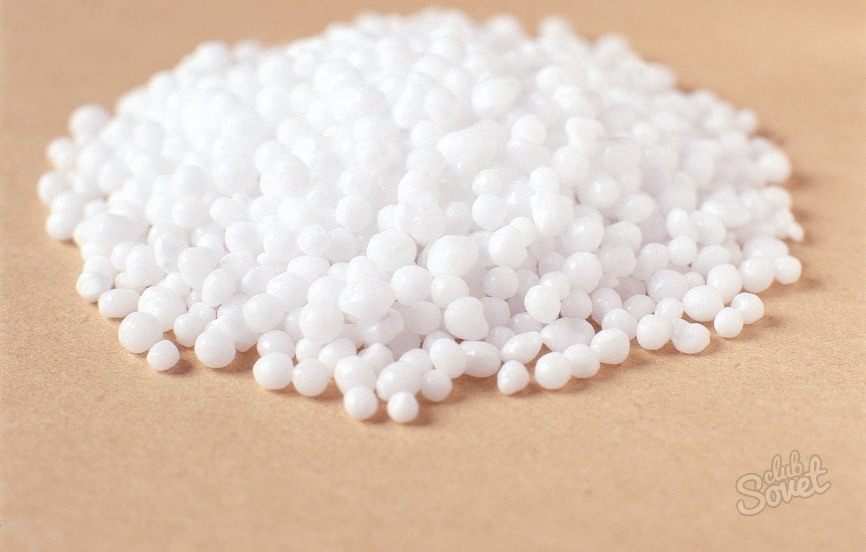
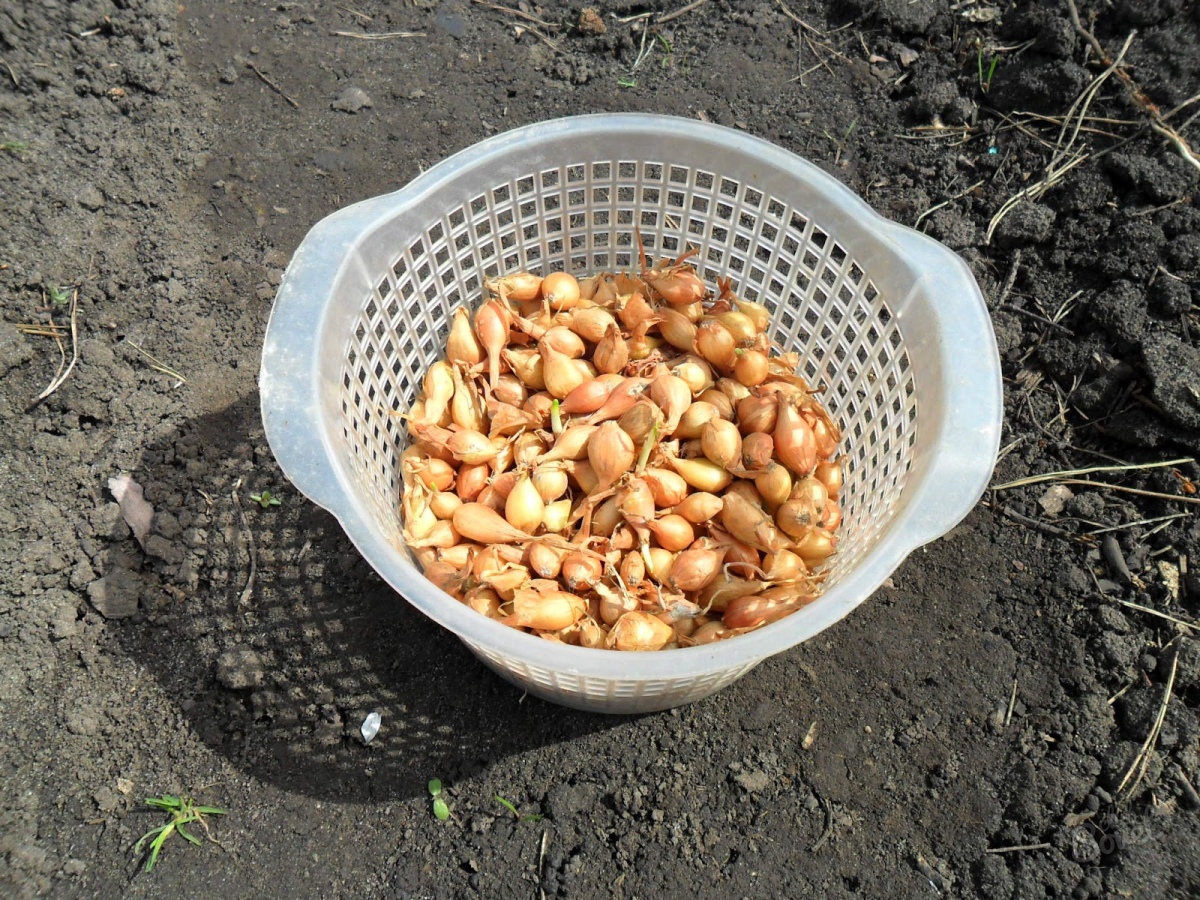
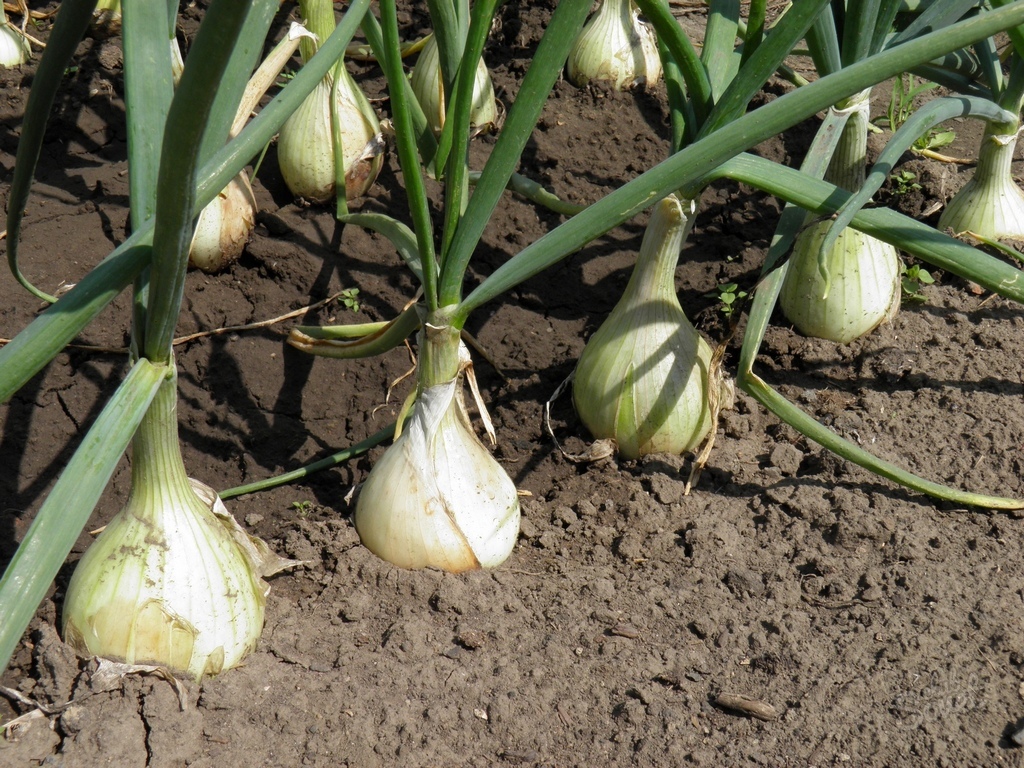
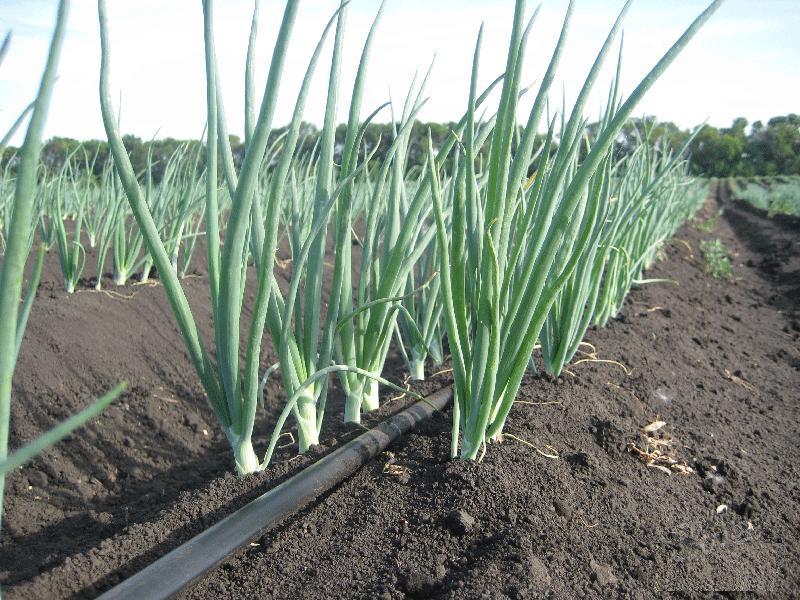
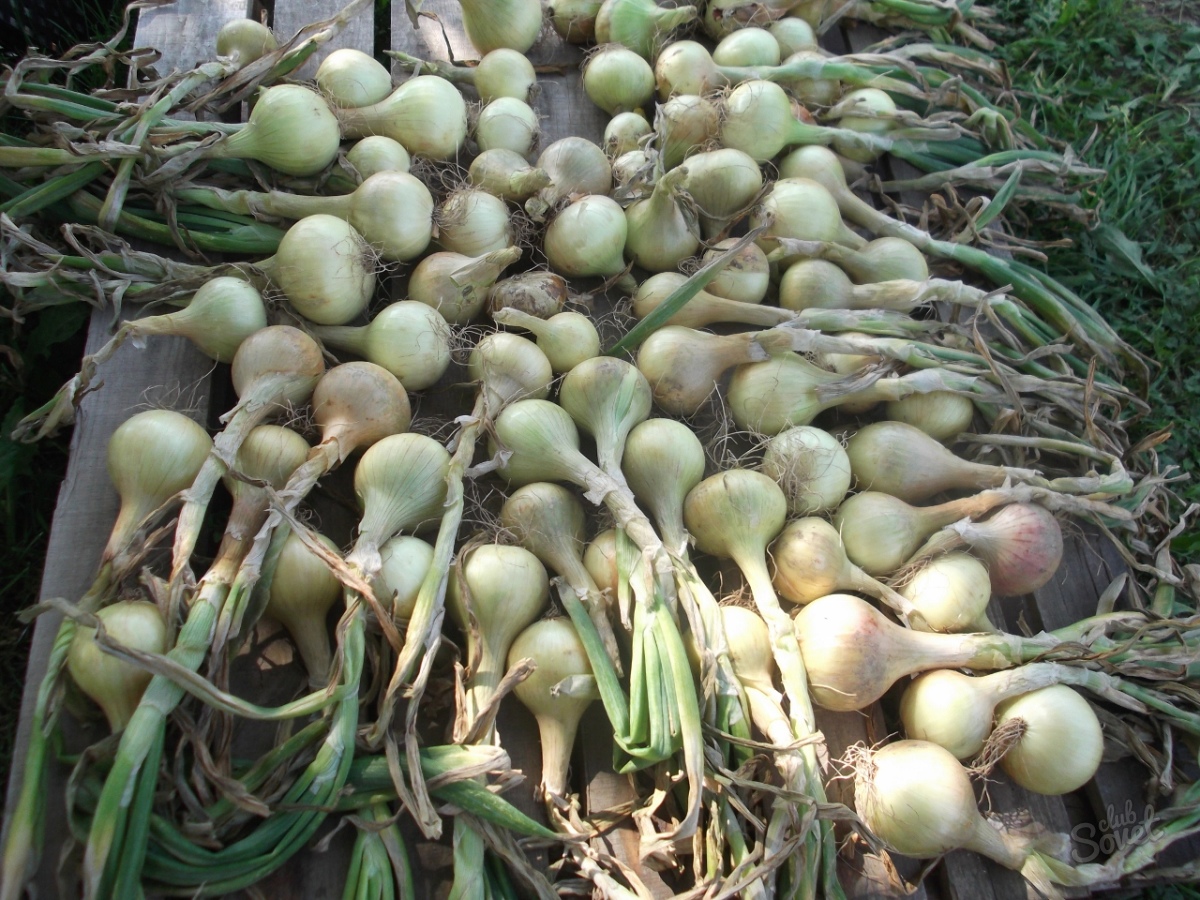
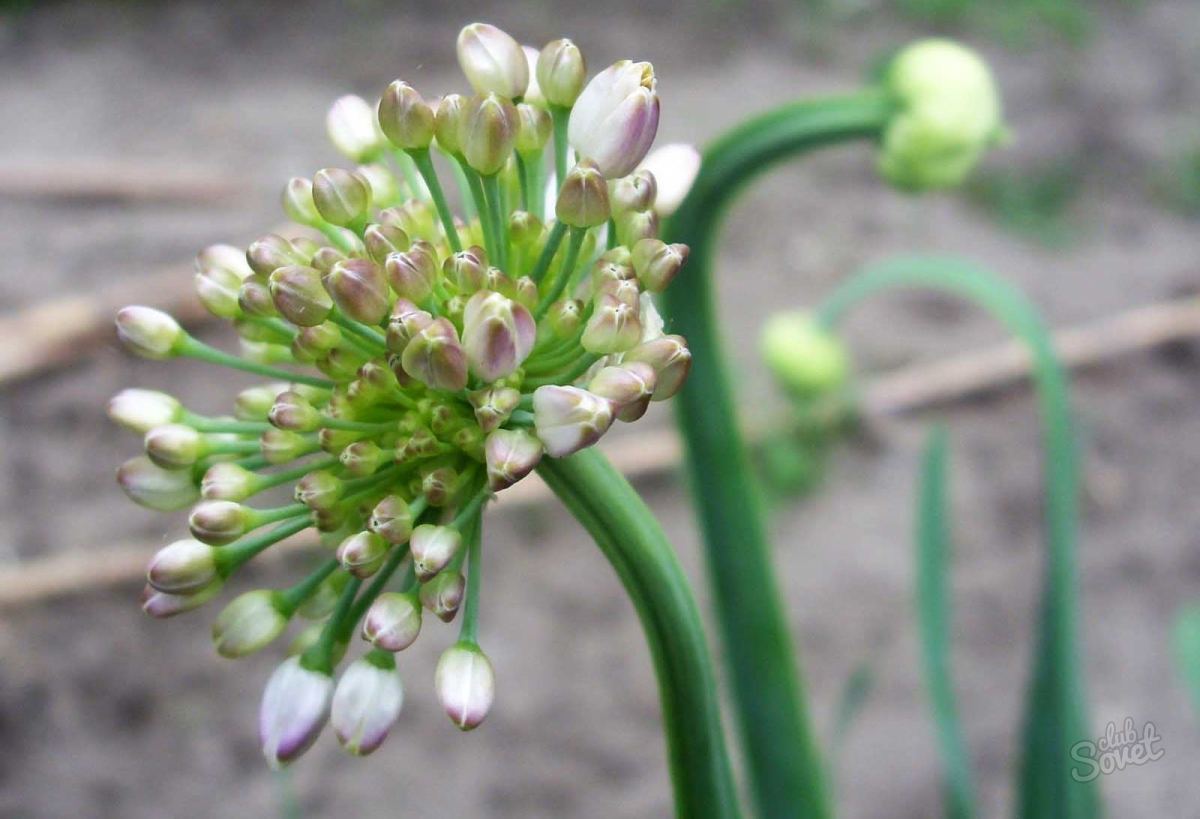
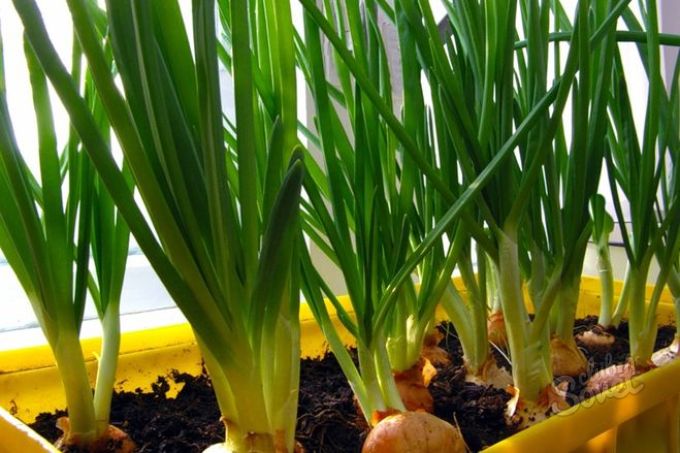
Do not grow onions on a feather on the windowsill, dropping the bulbs into jars or glasses of water. The green part of such an onion turns out to be too watery, and the roots eventually begin to rot, which leads to the formation of an unpleasant odor in the room.






